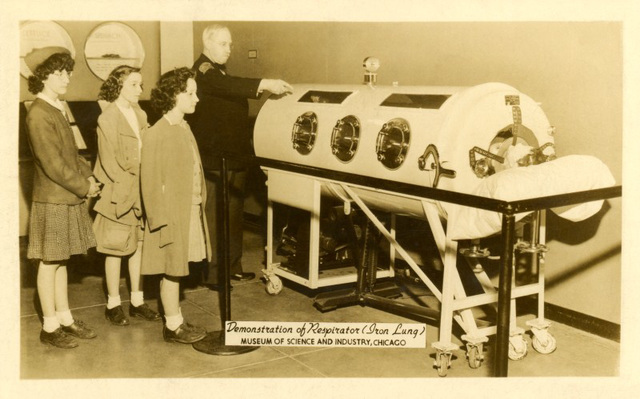Dalton Adding Machine, Comptometer Box, and Wall C…
Lewis Walker Company Office, 1925
Man at Desk, Lewis Walker Company Office, 1925
Illinois Screen Coal
Grand View Ship Hotel, Approach to the Hotel, Linc…
Grand View Ship Hotel, 63-Mile View, Lincoln Highw…
Let's Have Lamb: New and Distinctive Recipes
I'll Be There Soon to Tell You How to Jinger Up Yo…
The Fight for Victory
Horse Sense, Being the Reflections of a Wise Horse
Fairbank's Fairy Soap, N. K. Fairbank Company, Ch…
Skating Skills, Featuring Secrets of Roller Skatin…
Nick Manoloff's Modern Accompaniment Guide for Spa…
Chicago World's Fair Greyhound Lines, 1933-34
Two Men and a Paper Moon, Riverview Exposition, Ch…
Quaker Oats Metamorphic Trade Card
Santa Claus Soap, Best for the Laundry
World's Columbian Exposition Calling Card, Adminis…
Prudential's Calorie Counter
St. Clair Cocktail Circle, Hotel St. Clair, Chicag…
Electricity in a Bottle
Baby in a Crock
Joe DiMaggio's Restaurant, Fishermen's Wharf, San…
Theodore Roosevelt and the Roller Skate Craze
Curtiss Candy Company Mixed Bowling League, Chicag…
Uncle Sam Automaton at the Columbian Exposition, C…
Grin and Bear It
Cracker Jack Riddles
Friendly Tavern, U.S. Routes 11 and 15, Newport, P…
Inman Steamship Company
Bargain Water Closets from the St. Louis World's F…
Bargain Water Closets from the St. Louis World's F…
Brother Rarick and Willis at Dixon Church of the B…
Putnam Fadeless Dyes and Tints Advertising Fan (Ba…
Putnam Fadeless Dyes and Tints Advertising Fan
Mr. and Mrs. J. S. Shoemaker, Dakota, Illinois
Dr. LeGear, Largest Horse in the World
W. B. Probasco and James P. Lott, Burch House, Blo…
Singing and Strumming—and Shooting?
Roller Rink Ticket, Chicago Roller Skate Company,…
Happy New Year
Dreamland Castle, Legat Garden, Fox River Grove, I…
Spook Hill, Lake Wales, Florida
What Have You Found Now, Christopher Columbus?
The Umbrella Is Hardly Big Enough
Sam's Room
Chicago World's Fair 1933
A Century of Progress Ticket, Chicago, 1933
Eclipse Lawn Mower Natural Grip, New for 1941
Eclipse Lawn Mower Trophy Line, Beauty at Any Angl…
Orville Mellis, Lincoln Impersonator, Decatur, Ill…
Otto Funk, the World's Champion Cross-Country Fidd…
Rhoda (Detail)
Rhoda (Cropped)
Rhoda
See also...
See more...Keywords
Authorizations, license
-
Visible by: Everyone -
All rights reserved
-
1 957 visits
Demonstration of Respirator (Iron Lung), Museum of Science and Industry, Chicago, Ill.


A medical photo for the Vintage Photos Theme Park.
A real photo postcard published by the Grogan Photo Co., Danville, Ill. Postmarked Chicago, Ill., July 13, 1946.
"Iron lungs," a colloquial term for negative pressure ventilators (these medical devices are no longer called "respirators"), were notably used in the 1940s and 1950s to treat polio patients with paralyzed lungs. Fortunately, with the development of vaccines to prevent polio and the development of new types of ventilators and treatments, iron lungs are now used only infrequently.
A real photo postcard published by the Grogan Photo Co., Danville, Ill. Postmarked Chicago, Ill., July 13, 1946.
"Iron lungs," a colloquial term for negative pressure ventilators (these medical devices are no longer called "respirators"), were notably used in the 1940s and 1950s to treat polio patients with paralyzed lungs. Fortunately, with the development of vaccines to prevent polio and the development of new types of ventilators and treatments, iron lungs are now used only infrequently.
, , and 2 other people have particularly liked this photo
- Keyboard shortcuts:
Jump to top
RSS feed- Latest comments - Subscribe to the comment feeds of this photo
- ipernity © 2007-2024
- Help & Contact
|
Club news
|
About ipernity
|
History |
ipernity Club & Prices |
Guide of good conduct
Donate | Group guidelines | Privacy policy | Terms of use | Statutes | In memoria -
Facebook
Twitter

Alan Mays club has replied to John FitzGerald clubSign-in to write a comment.